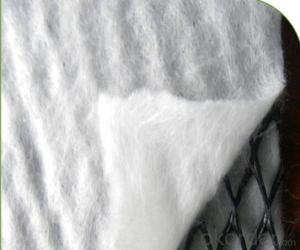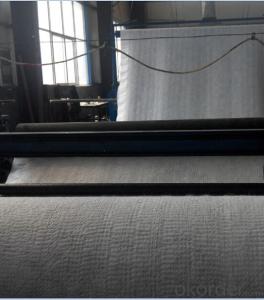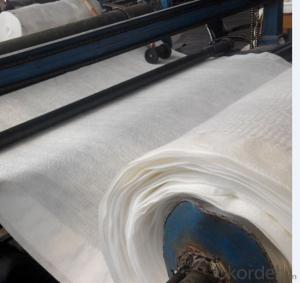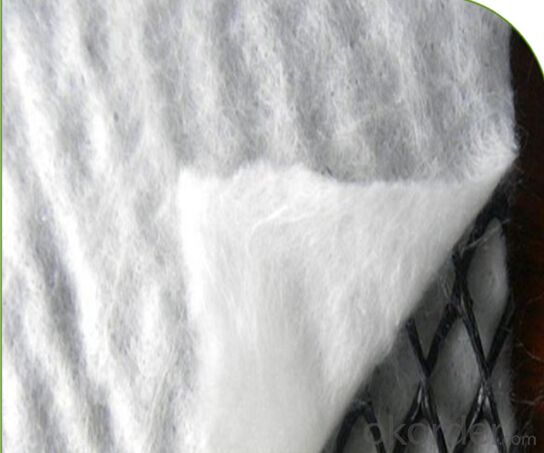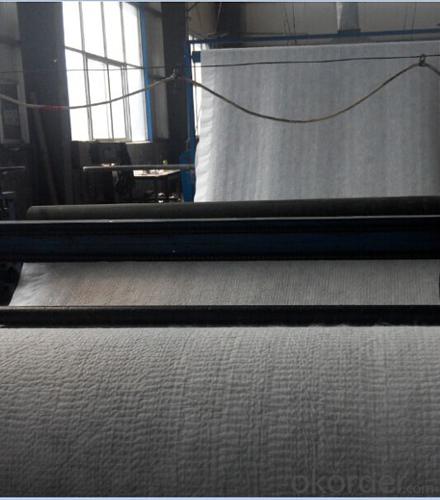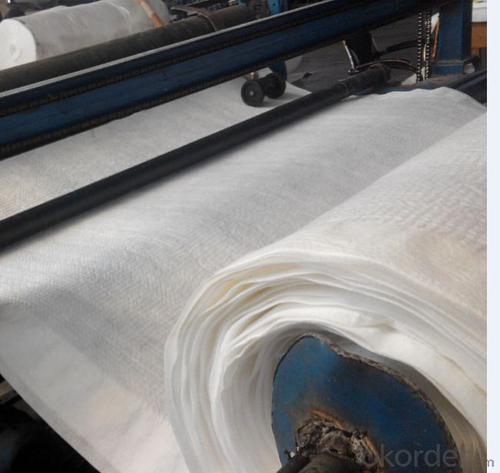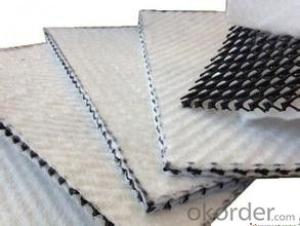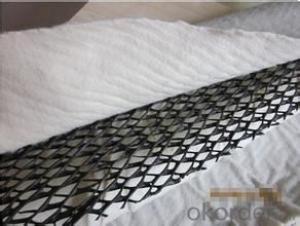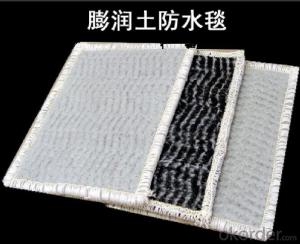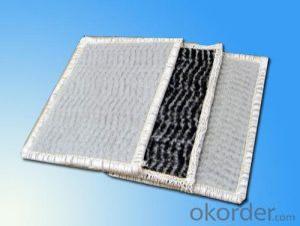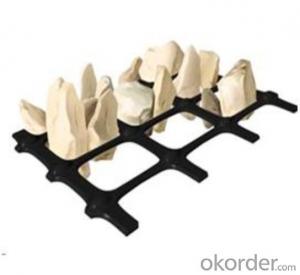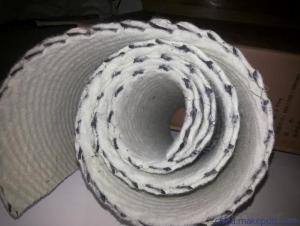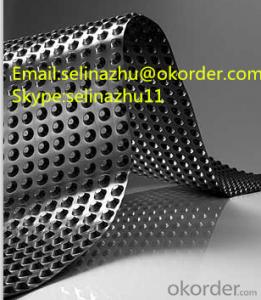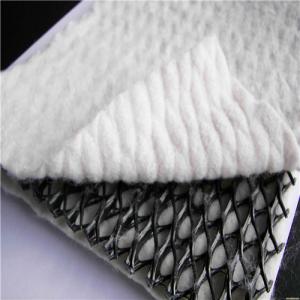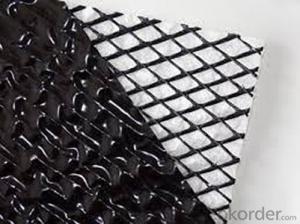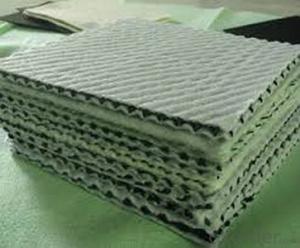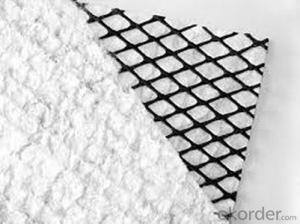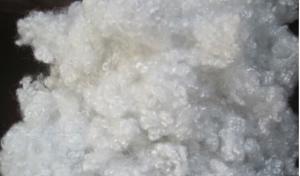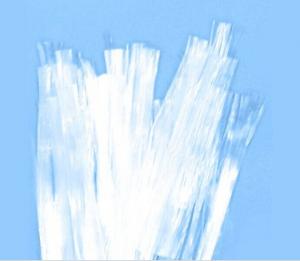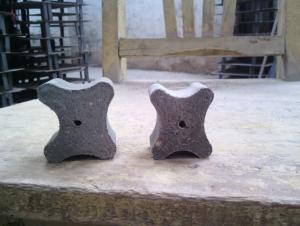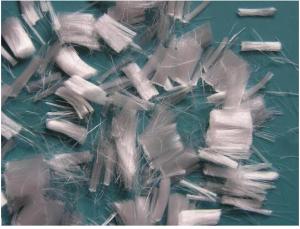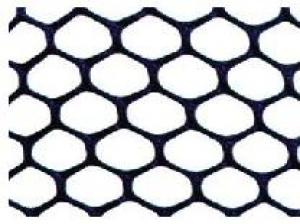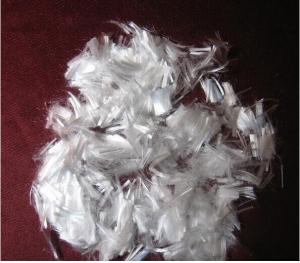HDPE Geonet For Drainage and Reinforcement
- Loading Port:
- Qingdao
- Payment Terms:
- TT OR LC
- Min Order Qty:
- 2000 m²
- Supply Capability:
- 200000 m²/month
OKorder Service Pledge
OKorder Financial Service
You Might Also Like
Three-dimension Composite Drainage Network Introduction
Three-dimension composite drainage network is made of a unique three-dimension geonet bonded geotextile on both sides. It has properties of both geotextile (filtration function) and geonet (drainage and protection) and provides a whole function system “filtration-drainage-protection”.
The net core with its unique three-dimension structure can bear high compression load in construction and keep certain thickness, providing good hydraulic conductivity.
Specifications
Geonet thickness: 5-8mm; Width: 2-4m; Length as requested
Geotextile can be needle punched polyester geotextile, continuous filament PET nonwoven geotextile or Polypropylene nonwoven geotextile, and the unit weight normally 200g/m2.
| Property | National standard | Enterprise Standard | Inspection standards |
| JG/T 193-2006 | |||
| Geosynthetic Clay Expansion index | ≥24 ml/2g | ≥25ml/2g | ASTM D5890 |
| Mass Per Unit Area(g/m2) | ≥4000 g/m2 | ≥4000 gm2 | ASTM D5993 |
| Tensile Strength | ≥6KN/m | ≥8KN/m | ASTM 4632 |
| Maximum load elongation | ≥10% | ≥10% | ASTM 4632 |
| Permeability | ≤5×10-11 | ≤5×10-11 | ASTM D5084 |
| Moisture content | ≤15% | ≤15% | ASTM D4643 |
| Peel strength | ≥40N | ≥65N | ASTM D4632 |
| Hydrostatic pressure | 0.4Mp | 0.4~0.6Mp | ASTM D5891 |
Features
1. Excellent drainage function, able to bear long time high pressure load
2. High tensile and shear strength
3. Able to protect its long time and stable hydraulic conductivity
4. Able to bear more than 2000kpa compression load, its anti-pressure capacity much higher than common drainage network
5. Corrosion resistant, acid and alkali resistant.
Application
Landfill drainage; Roadbed and road drainage; railway drainage; tunnel drainage; underground structure drainage; the retaining back wall drainage; garden and sports ground drainage.
FAQ
1. Which payment do you accept?
For you convinience,our payment can be L/C,TT
2. Is free sample available?
We can supply free samples if you need.
3. How about your quality?
We have strict quality control system, we make testing on incoming raw material and finished products. Your third party testing is also welcomed. With high quality, our products are used on government projects at home and abroad. Our product quality is accepted by clients from all over the world
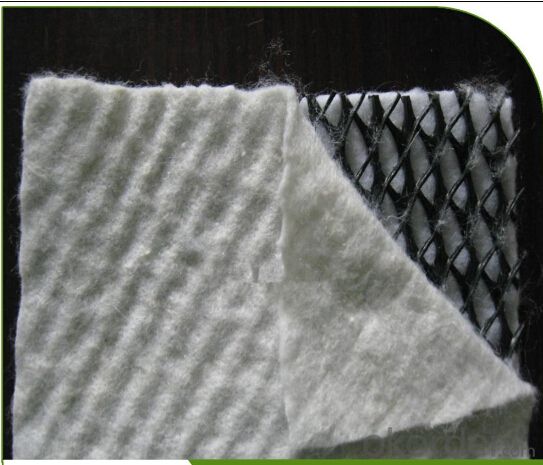
- Q: These two are learning what courses, engage in what industry, employment wages, the development of space, the need for expertise, and so on and so on. Which is better? I 3, reported to build large
- The main disciplines of civil engineering: theoretical mechanics, material mechanics, structural mechanics, fluid mechanics, soil mechanics, building materials, concrete structures and steel structures, housing structures, bridge structures, underground structures, road survey design and roadbed pavement structures, management.
- Q: How do geosynthetic clay liners prevent leakage in landfill caps?
- Geosynthetic clay liners prevent leakage in landfill caps by acting as a barrier that restricts the movement of liquids. These liners are made up of a layer of bentonite clay sandwiched between two geotextile layers. The bentonite clay swells when it comes into contact with water, creating a dense and impermeable layer. This swelling property of the clay helps to seal any potential gaps or cracks in the landfill cap, preventing the leakage of liquids such as leachate into the surrounding environment.
- Q: Which version of the material mechanics (author) is suitable for civil engineering this profession?
- Structural mechanics, "structural mechanics", "river dynamics", "geotechnical principles", "soil mechanics and environmental geology", "steel", "elasticity theory", "elastic theory" (upper and lower volumes) Structure of the basic principles "(second edition)
- Q: What are the different design options available in earthwork products?
- There are several design options available in earthwork products, including but not limited to slope stabilization, erosion control, retaining walls, and stormwater management systems. These options can be customized based on the specific needs and requirements of the project, ensuring effective and efficient earthwork solutions.
- Q: Are earthwork products environmentally friendly?
- Earthwork products can be considered environmentally friendly because they are typically made from natural materials and do not release harmful chemicals or pollutants into the environment. Additionally, earthwork products often have a low carbon footprint compared to other construction materials, as they require minimal processing and transportation. However, the specific environmental impact can vary depending on the sourcing, manufacturing process, and disposal methods of these products.
- Q: How do earthwork products contribute to air quality improvement?
- Earthwork products, such as soil and sand, contribute to air quality improvement through various ways. Firstly, these products can be used for vegetation and tree planting, which helps in removing pollutants from the air through the process of photosynthesis. Additionally, earthwork products can be utilized for creating green spaces, parks, and gardens, which act as natural filters, absorbing and trapping harmful particles and pollutants from the air. Moreover, these products can be used for constructing barriers or berms that help in reducing dust and wind erosion, preventing airborne pollutants from spreading. Overall, earthwork products play a crucial role in enhancing air quality by promoting greenery, reducing dust, and mitigating the impact of pollutants in the environment.
- Q: How do earthwork products help with wetland creation?
- Earthwork products, such as fill materials and geotextiles, play a crucial role in wetland creation by providing necessary structural support and promoting appropriate hydrological conditions. Fill materials are used to elevate the ground and create suitable topography for wetlands, ensuring proper water retention and drainage. Geotextiles, on the other hand, aid in erosion control and stabilization of soil, preventing sedimentation and promoting vegetation growth. By using earthwork products, wetland creation projects can effectively mimic natural wetland conditions and establish a thriving ecosystem.
- Q: Can earthwork products be used for creating outdoor exercise areas?
- Yes, earthwork products can be used for creating outdoor exercise areas. Earthwork products such as gravel, soil, and sand can be used to level the ground, create paths, and provide a stable surface for various exercise activities. Additionally, earthwork products can be used to construct features like berms, hills, and mounds that can be utilized for different types of exercises and challenges.
- Q: How do earthwork products differ from other construction materials?
- Earthwork products, such as soil, sand, gravel, and rocks, differ from other construction materials primarily because they are naturally occurring and extracted from the earth's surface. Unlike manufactured materials like concrete, steel, or timber, earthwork products are typically obtained through excavation or quarrying processes. Additionally, earthwork products are often used as foundational materials, providing stability, drainage, and compaction to construction projects, whereas other materials serve different functions such as structural support or finishing touches.
- Q: Are earthwork products suitable for use in road construction?
- Yes, earthwork products are suitable for use in road construction. Earthwork products, such as soil, gravel, and fill materials, are commonly used in various stages of road construction. These materials are cost-effective, readily available, and can provide a stable foundation, drainage, and strength to roads. Additionally, earthwork products can be engineered to meet specific requirements, making them versatile and suitable for use in different road construction projects.
Send your message to us
HDPE Geonet For Drainage and Reinforcement
- Loading Port:
- Qingdao
- Payment Terms:
- TT OR LC
- Min Order Qty:
- 2000 m²
- Supply Capability:
- 200000 m²/month
OKorder Service Pledge
OKorder Financial Service
Similar products
Hot products
Hot Searches
Related keywords
